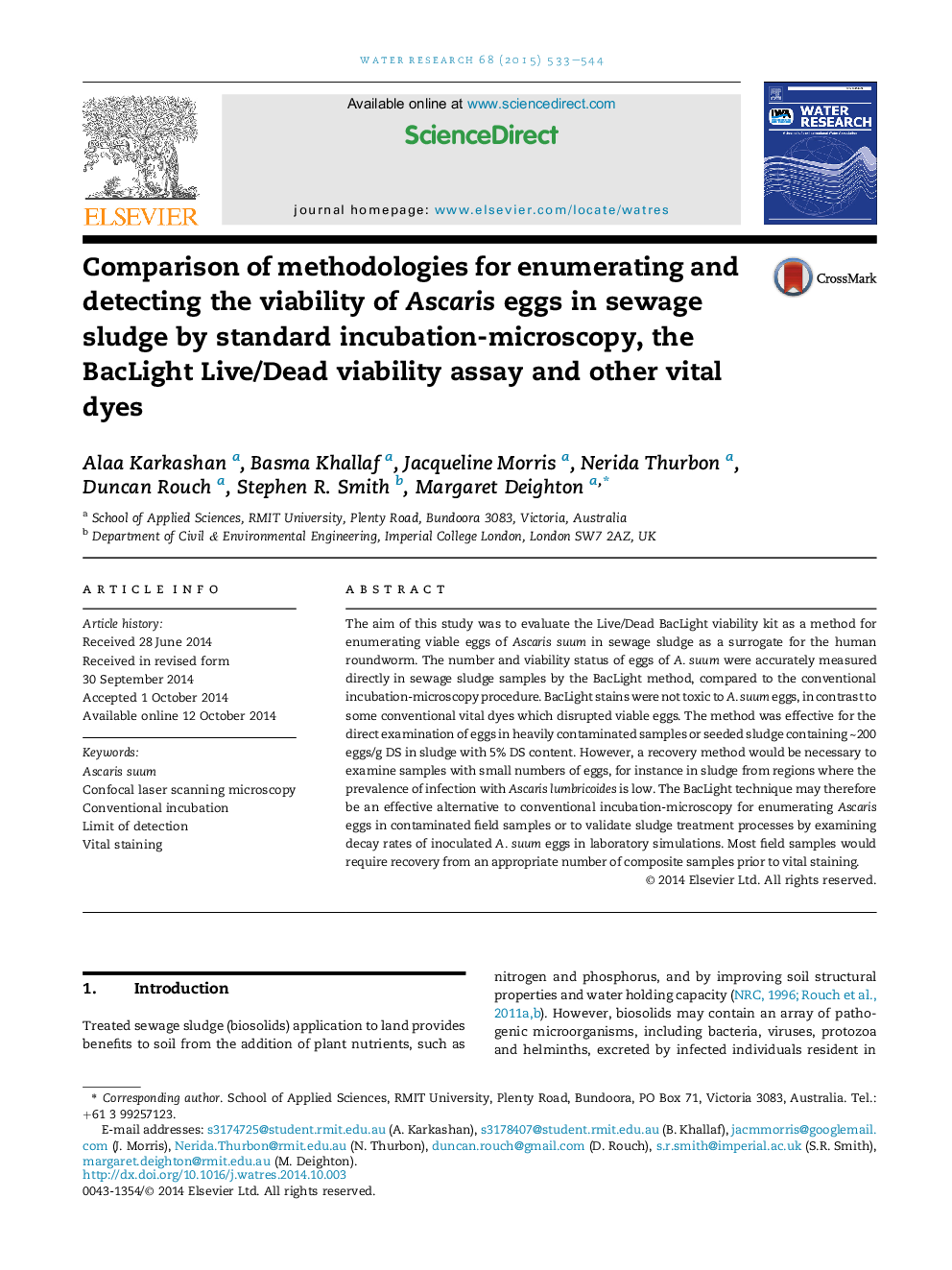| Article ID | Journal | Published Year | Pages | File Type |
|---|---|---|---|---|
| 6366353 | Water Research | 2015 | 12 Pages |
â¢BacLight accurately enumerated viable eggs of Ascaris suum in sewage sludge.â¢The method does not require extended incubation as does the standard method.â¢The method could be used for examining decay rates in simulation studies.â¢It could also be used to assess viability in heavily contaminated field sludge.â¢Most field sludge samples would require a recovery step prior to vital staining.
The aim of this study was to evaluate the Live/Dead BacLight viability kit as a method for enumerating viable eggs of Ascaris suum in sewage sludge as a surrogate for the human roundworm. The number and viability status of eggs of A. suum were accurately measured directly in sewage sludge samples by the BacLight method, compared to the conventional incubation-microscopy procedure. BacLight stains were not toxic to A. suum eggs, in contrast to some conventional vital dyes which disrupted viable eggs. The method was effective for the direct examination of eggs in heavily contaminated samples or seeded sludge containing â¼200 eggs/g DS in sludge with 5% DS content. However, a recovery method would be necessary to examine samples with small numbers of eggs, for instance in sludge from regions where the prevalence of infection with Ascaris lumbricoides is low. The BacLight technique may therefore be an effective alternative to conventional incubation-microscopy for enumerating Ascaris eggs in contaminated field samples or to validate sludge treatment processes by examining decay rates of inoculated A. suum eggs in laboratory simulations. Most field samples would require recovery from an appropriate number of composite samples prior to vital staining.
